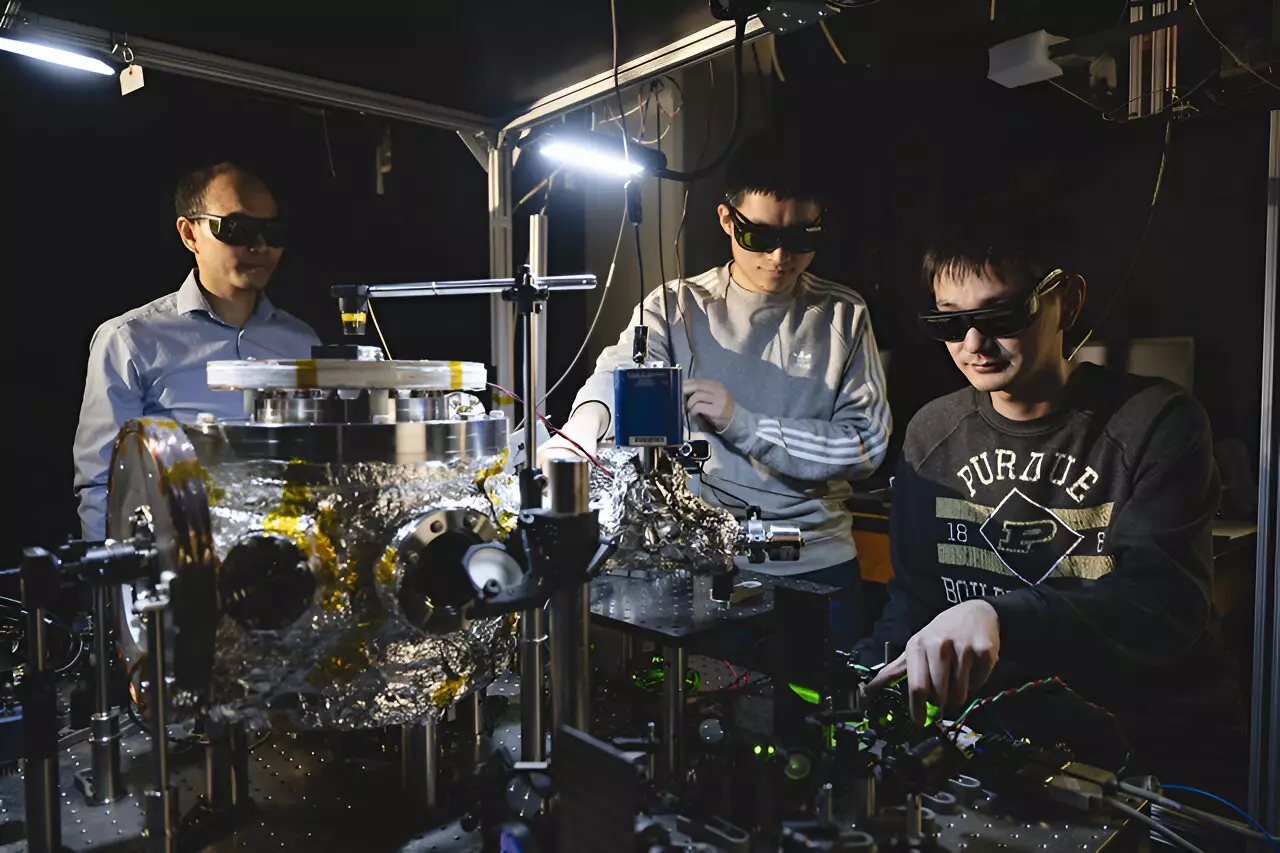The realm of quantum mechanics continues to captivate scientists with its ethereal complexities and enigmas. Recently, a groundbreaking study from a team at Purdue University demonstrates an innovative approach to studying quantum systems through the fascinating method of levitodynamics. By creating a disco-like atmosphere with their experimental setup, the researchers have opened a new chapter in the field by levitating and rapidly spinning fluorescent nanodiamonds, allowing for unprecedented observations of quantum spin properties.
At the heart of this research are fluorescent nanodiamonds, ingeniously crafted with a diameter of just 750 nanometers. These microscopic jewels have been specially engineered to harbor spin qubits—quantum bits that are pivotal for measuring quantum phenomena. The key to their levitation lies in a meticulously designed ion trap that creates a stable high vacuum, enabling the levitated diamonds to defy gravity. The publication of their findings in Nature Communications has elicited enthusiasm among the scientific community, with peers noting it as a revolutionary step in the exploration of quantum systems.
A striking feature of this research is the astonishing speed at which the nanodiamonds are made to rotate—reaching up to an incredible 1.2 billion revolutions per minute. This swift rotation becomes a conduit for understanding how rotation influences the spin qubits, particularly through a phenomenon known as the Berry phase. By observing these effects, the researchers, led by Professor Tongcang Li, have taken significant strides toward deciphering the obscure interplay between fundamental quantum mechanics and gravitational forces.
The research team faced challenges in their past experiments due to difficulties in maintaining the diamonds’ stability and reading the spin states of qubits. However, their innovative approach to levitating the diamonds allowed for effective control and observation of the spin qubits. The novel use of high-energy electron irradiation to create nitrogen-vacancy centers in the diamonds is key; these centers are responsible for the distinct electron spin states that emit red light when excited by laser illumination. This method of illumination not only aids in detecting spin states but also encases vital information about the diamond’s rotational behavior.
The successful execution of this experiment was the result of collaborative efforts among a diverse group of researchers at Purdue and beyond. Each member of the team played a pivotal role in designing and perfecting the experimental setup, underscoring the value of interdisciplinary collaboration in science. Utilizing advanced simulation software, COMSOL Multiphysics, the team meticulously analyzed their design parameters, leading to innovative enhancements to the ion trap.
With the capability to study rotating nanodiamonds embedded with spin qubits, the implications for understanding quantum gravity could be profound. As researchers strive to unify general relativity and quantum mechanics—two monumental 20th-century breakthroughs—the potential to experimentally probe the nature of gravity at the quantum level remains an elusive yet tantalizing prospect. Li emphasizes that mastering the experimental conditions to study quantum gravity could yield revolutionary insights into the fundamental laws of the cosmos.
Beyond academic curiosity, the techniques pioneered in this research could have substantial implications for various technological applications. The stability and sensitivity of levitated nanodiamonds position them as prime candidates for cutting-edge advancements in sensing technology, such as accelerometers and electric field detectors. Organizations like the U.S. Air Force Research Laboratory are already exploring how optically levitated nanoparticles can address critical navigation and communication challenges, hinting at a future where quantum technology plays an indispensable role in our everyday lives.
The remarkable exploration of fluorescent nanodiamonds at Purdue marks not just a technological achievement but a cultural milestone in the ongoing quest to unveil the mysteries of quantum mechanics. As researchers like Professor Li and his team continue to pave the way for innovative methodologies, the scientific community eagerly anticipates the discoveries that will emerge from this stimulating field. The combination of rigorous experimentation and groundbreaking innovation holds the promise of unlocking the complexities of the universe, one spin qubit at a time.


Leave a Reply